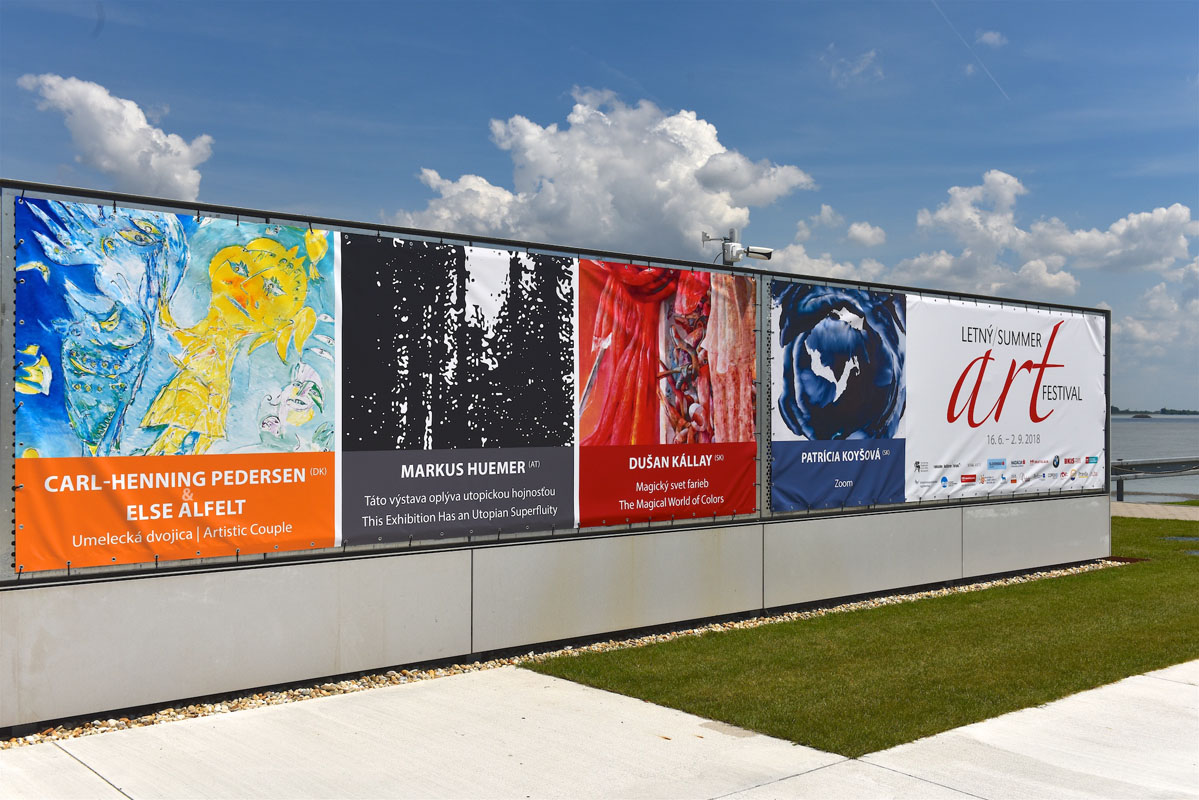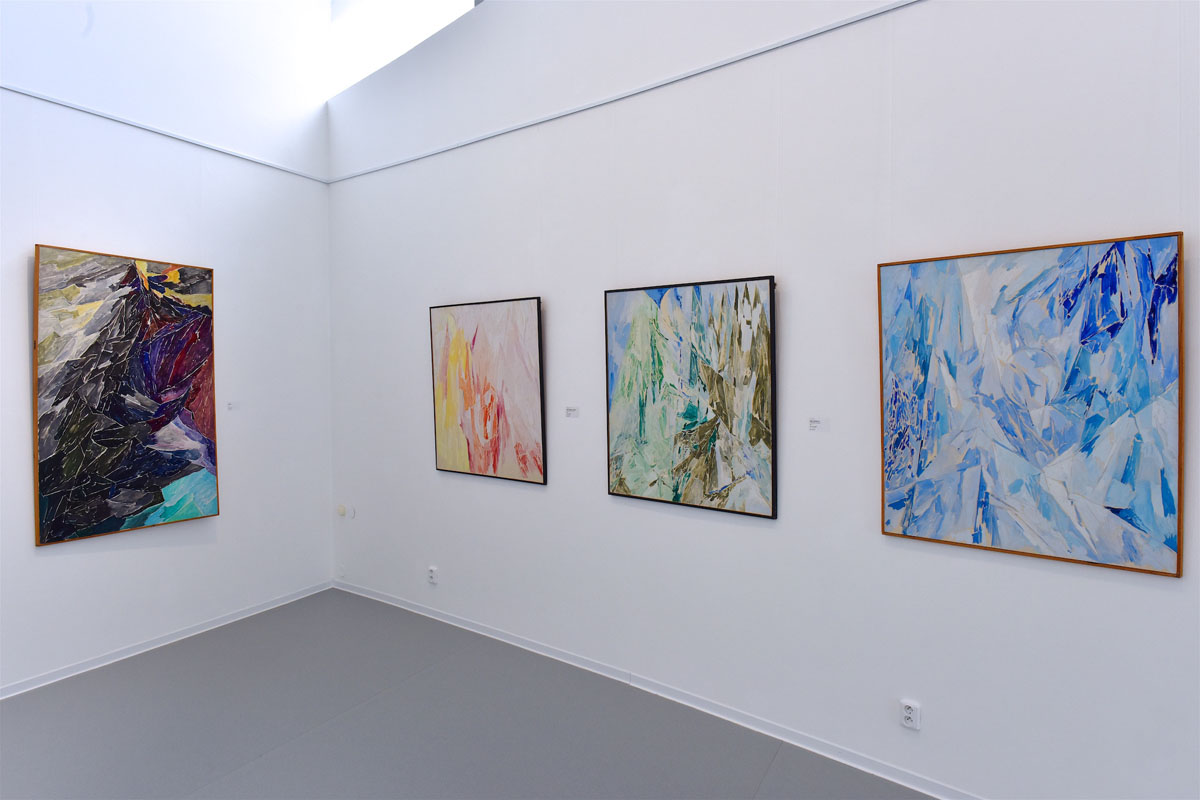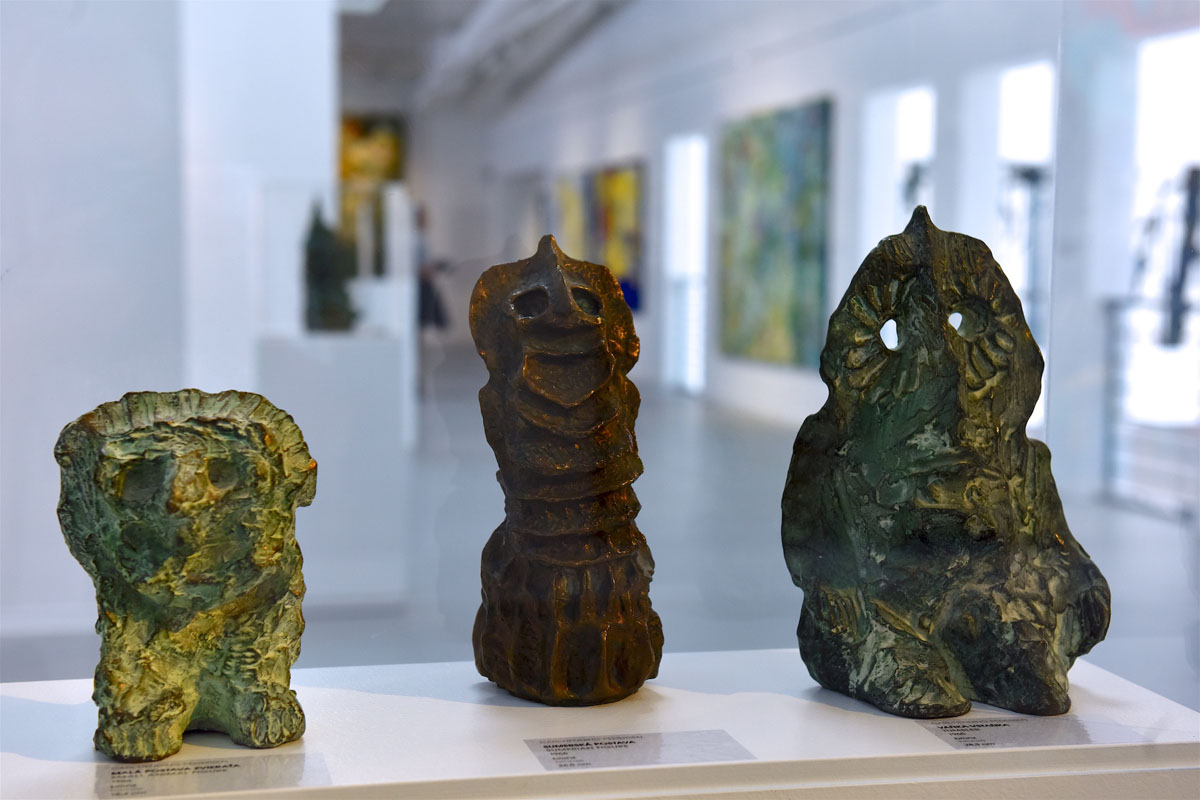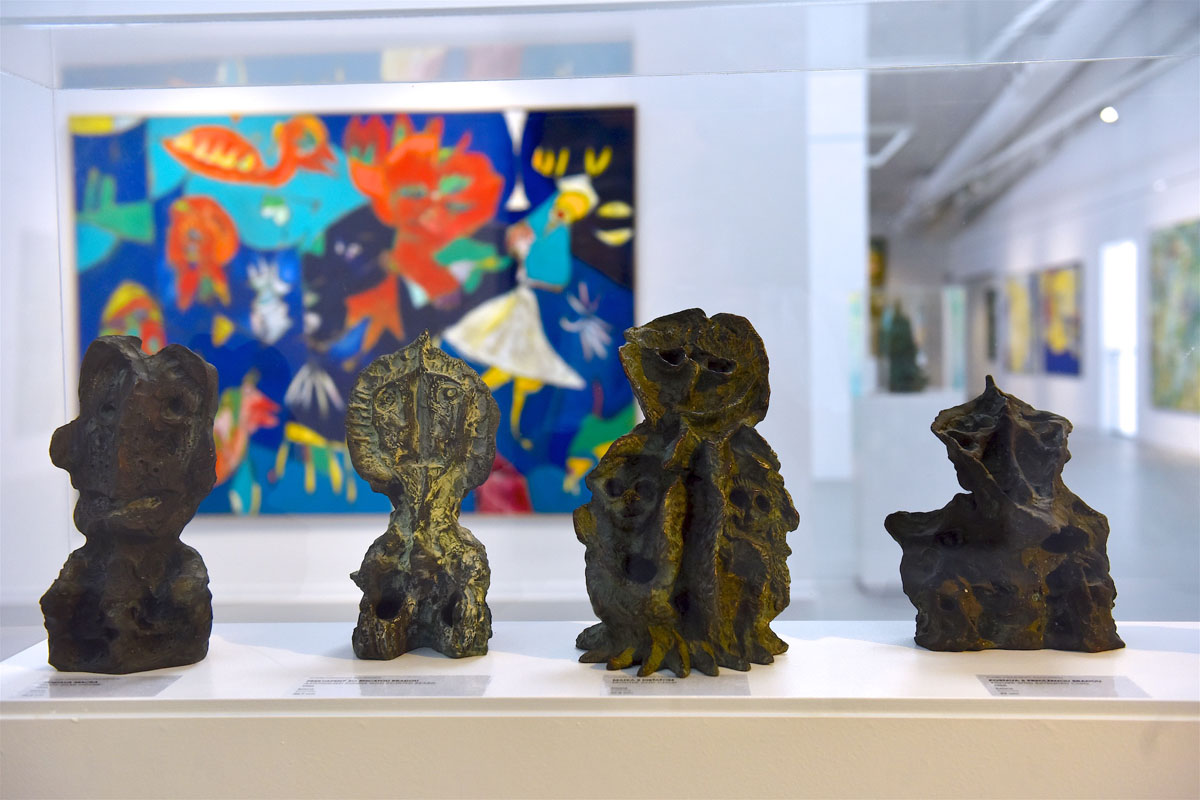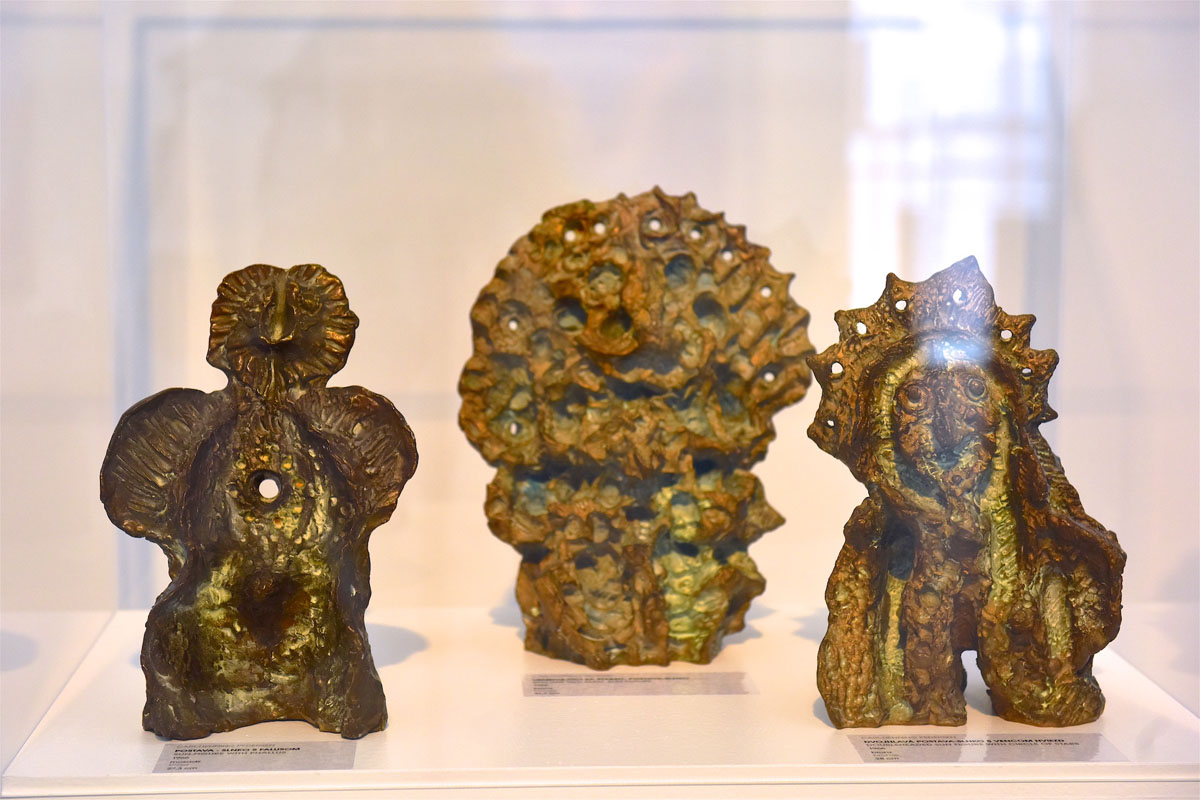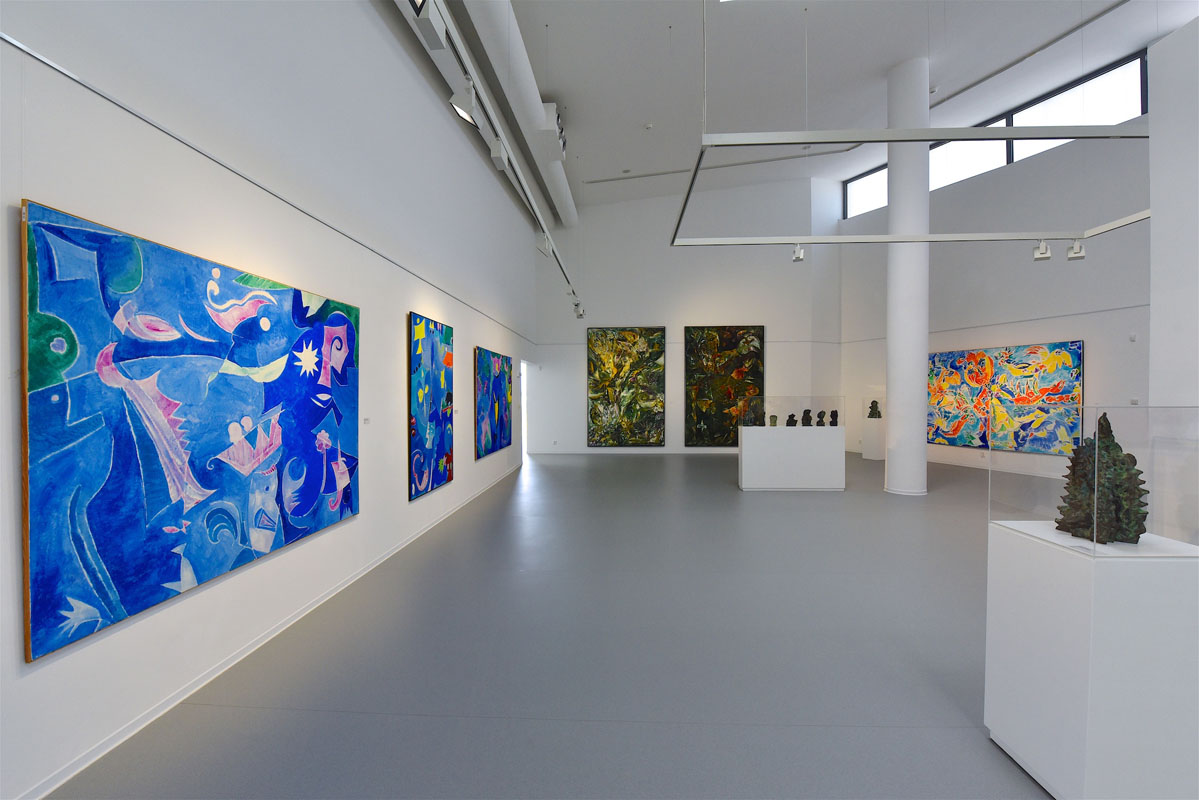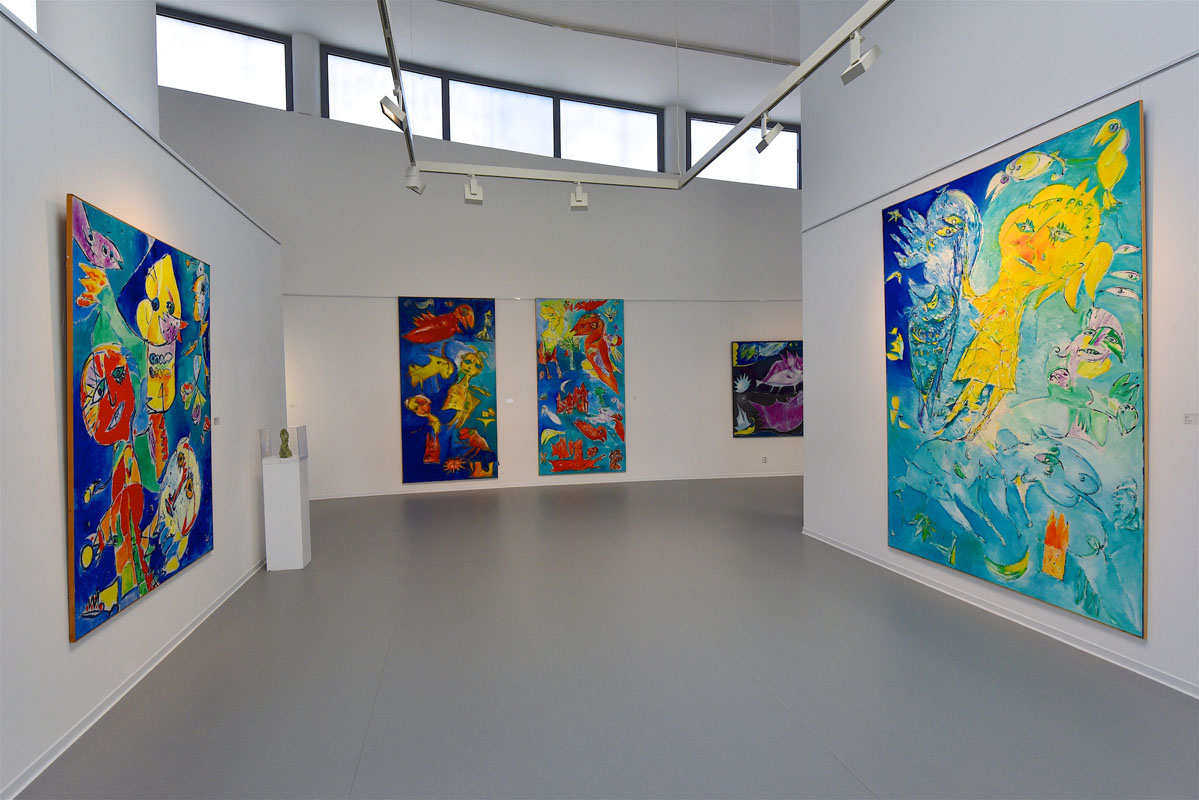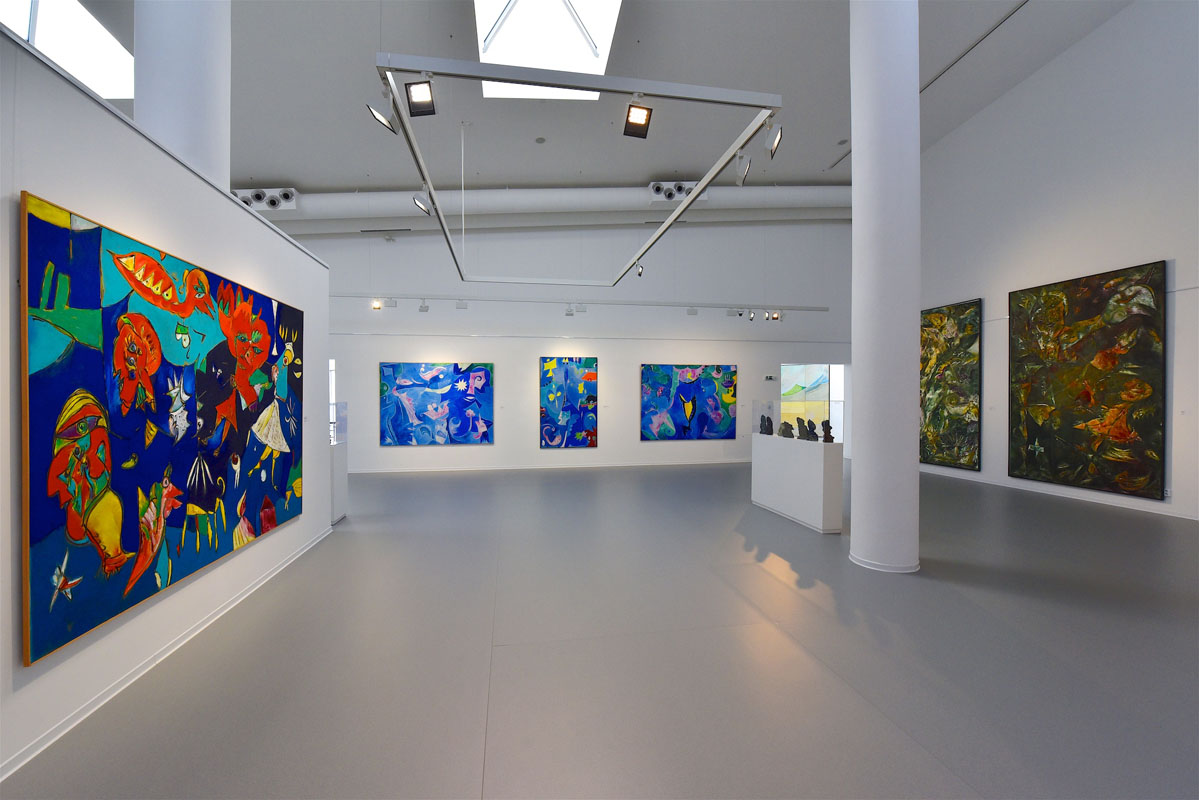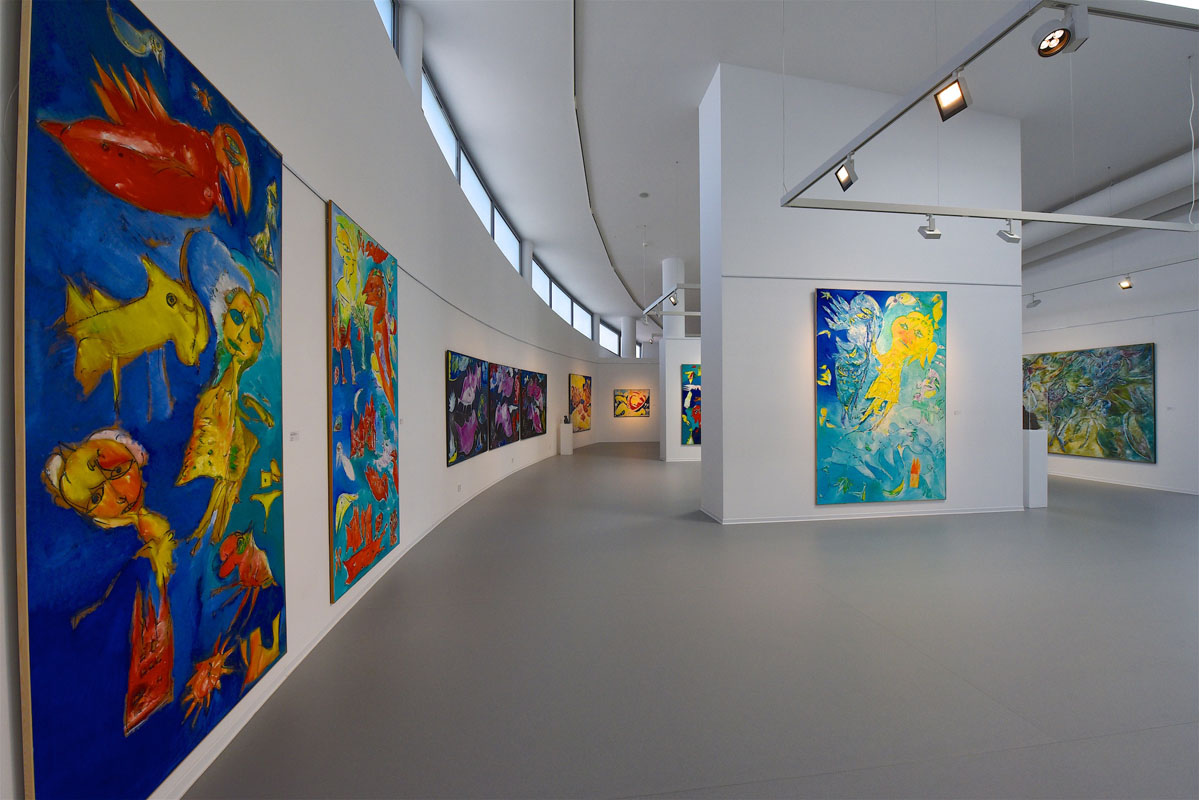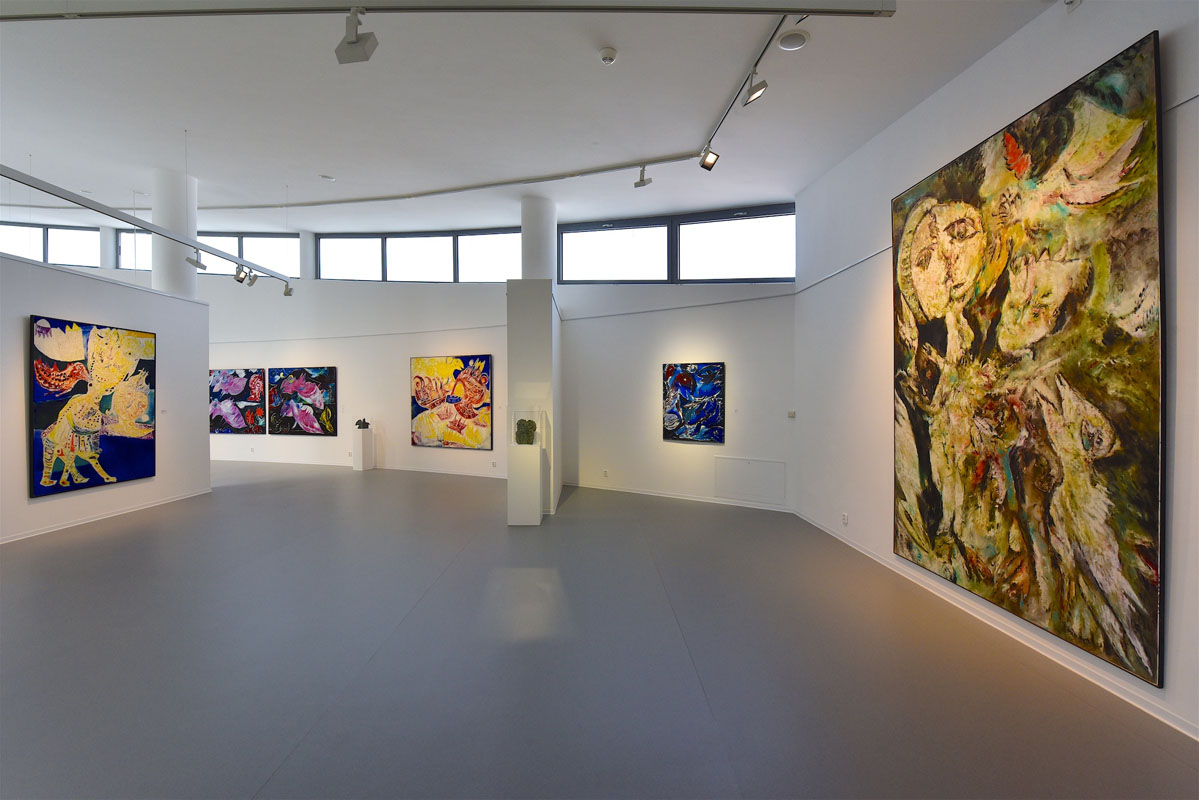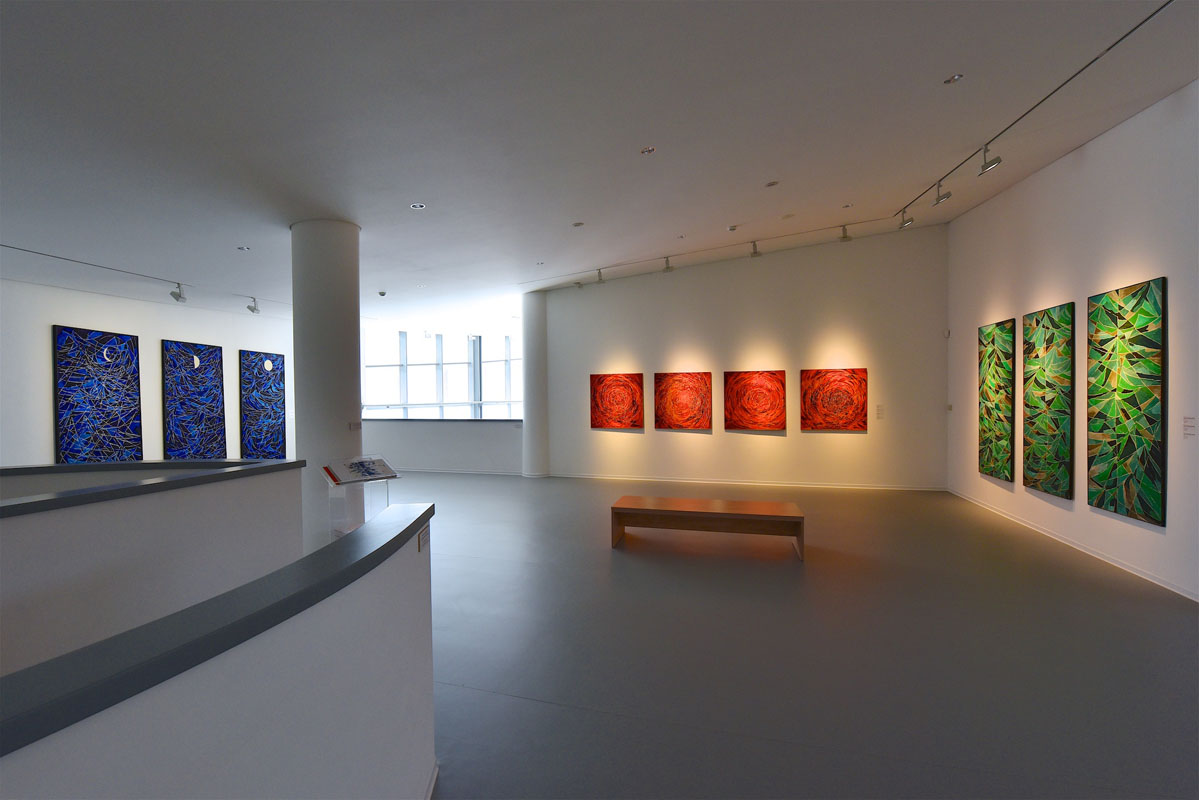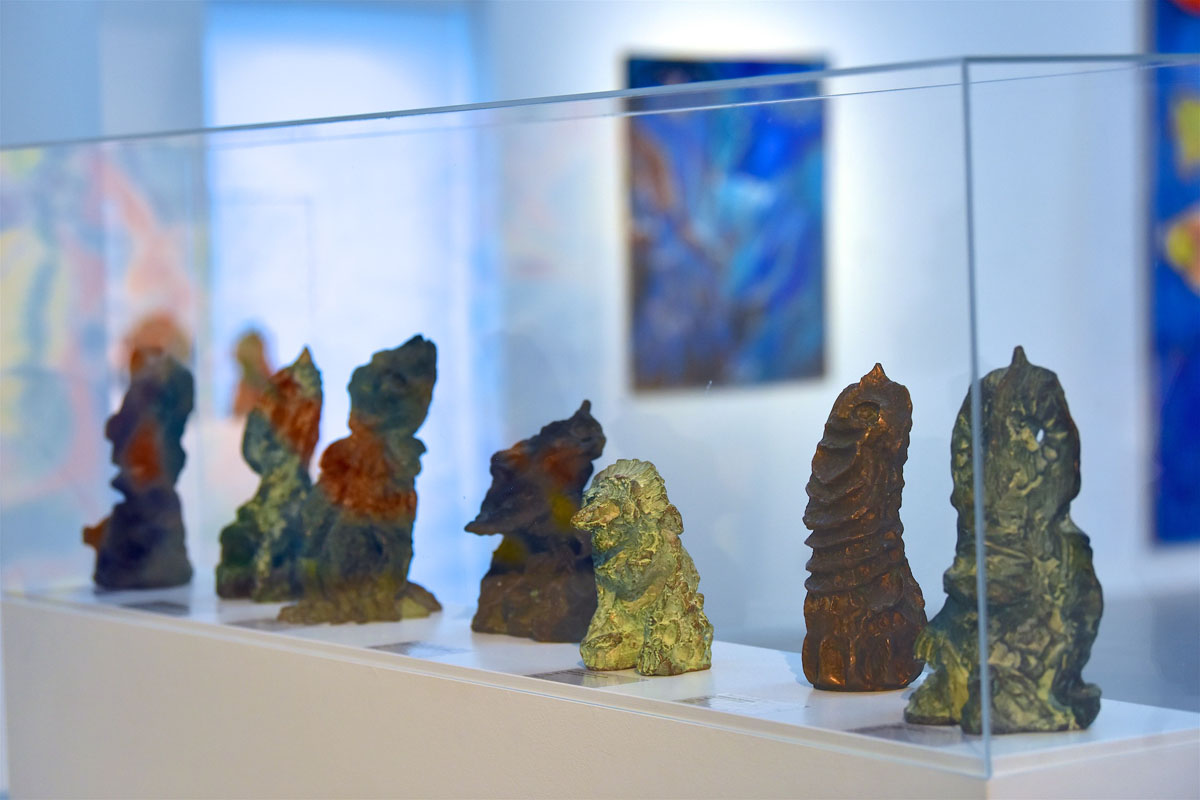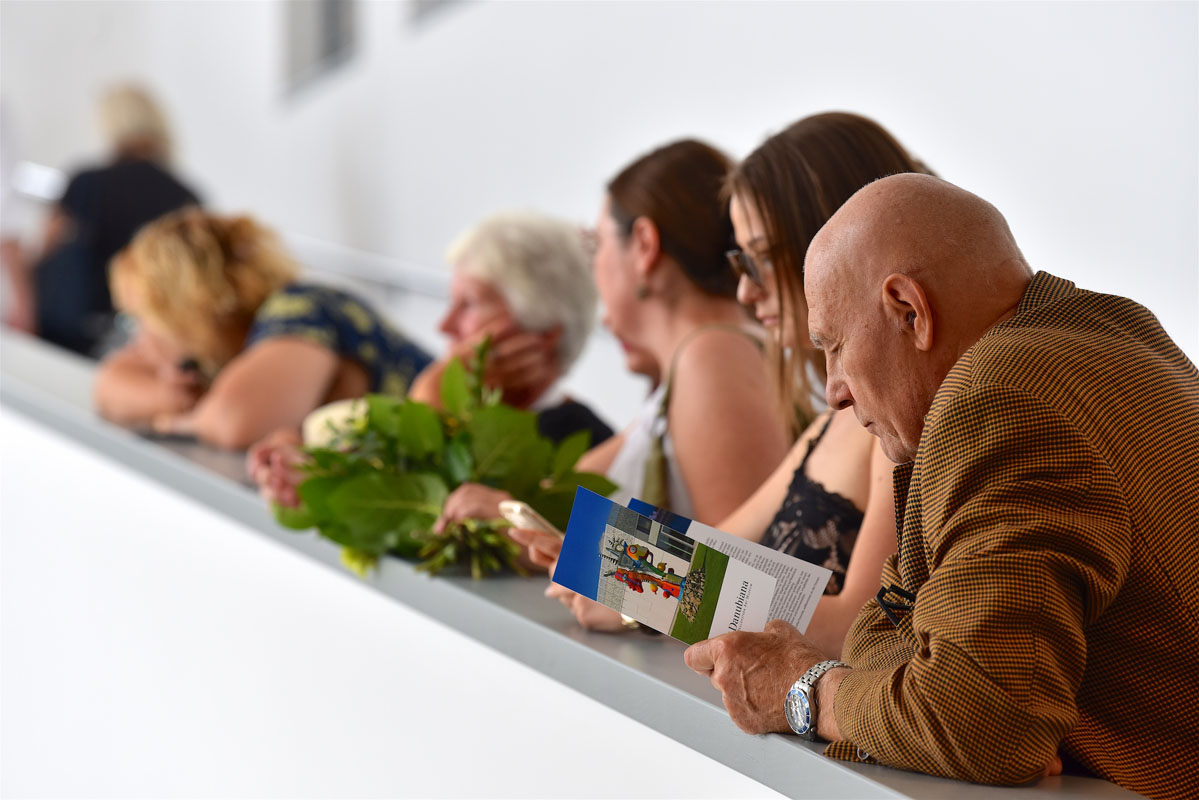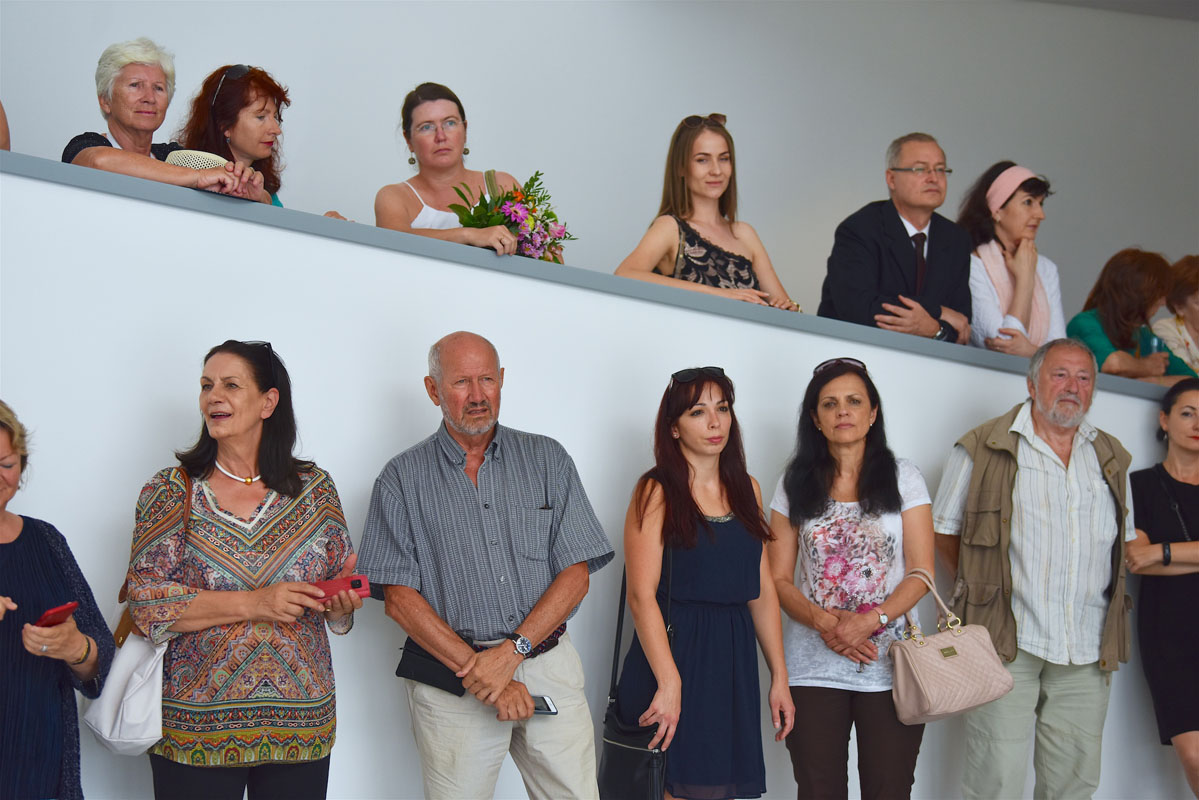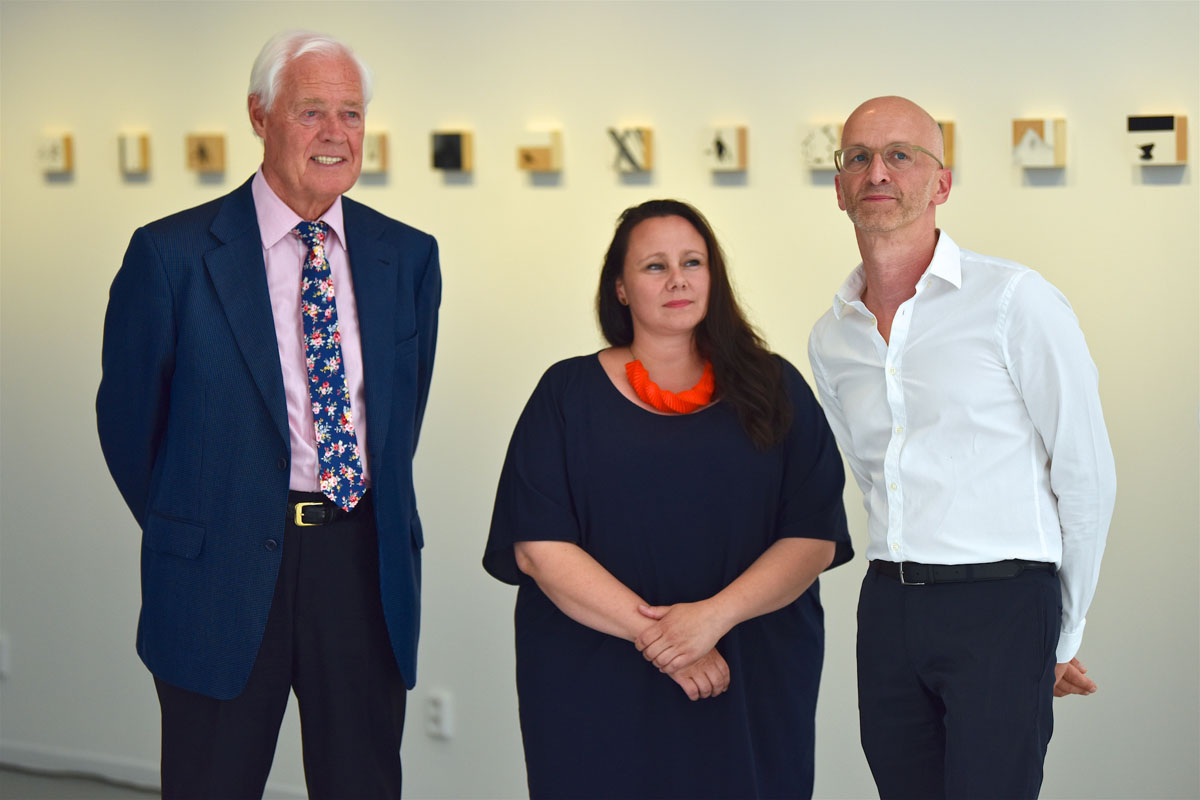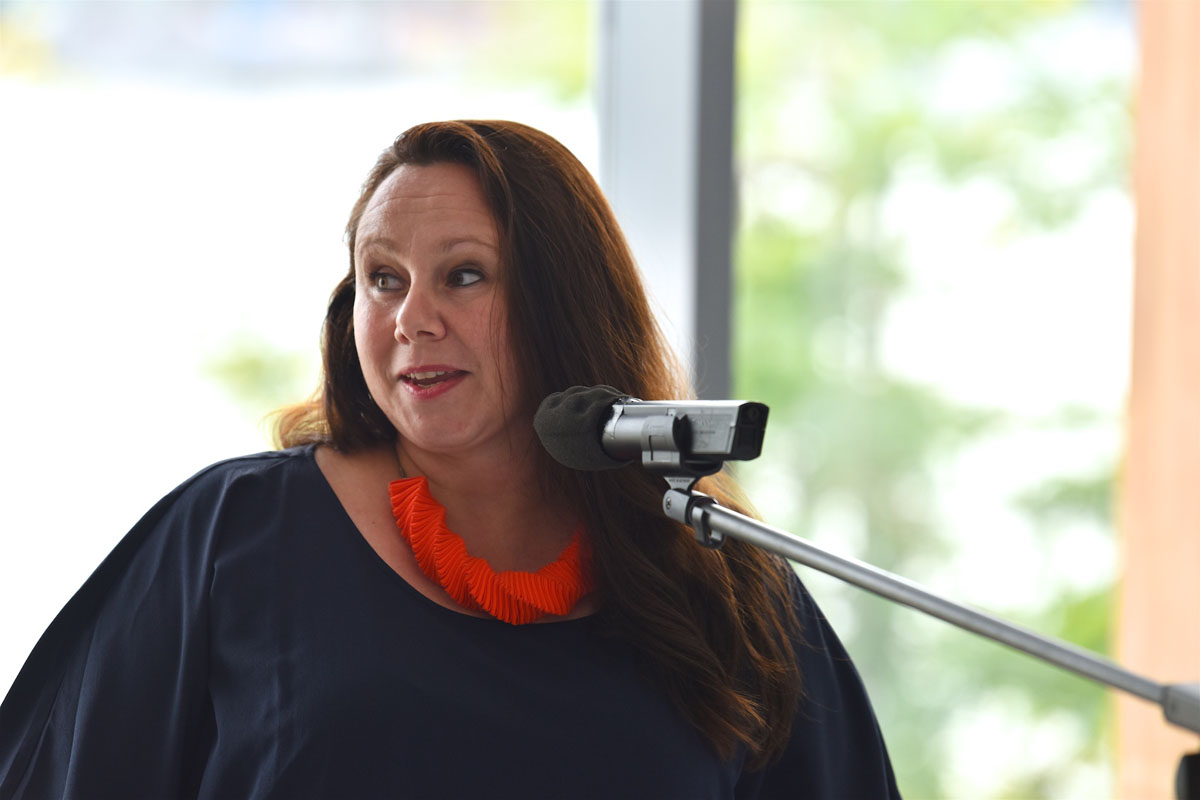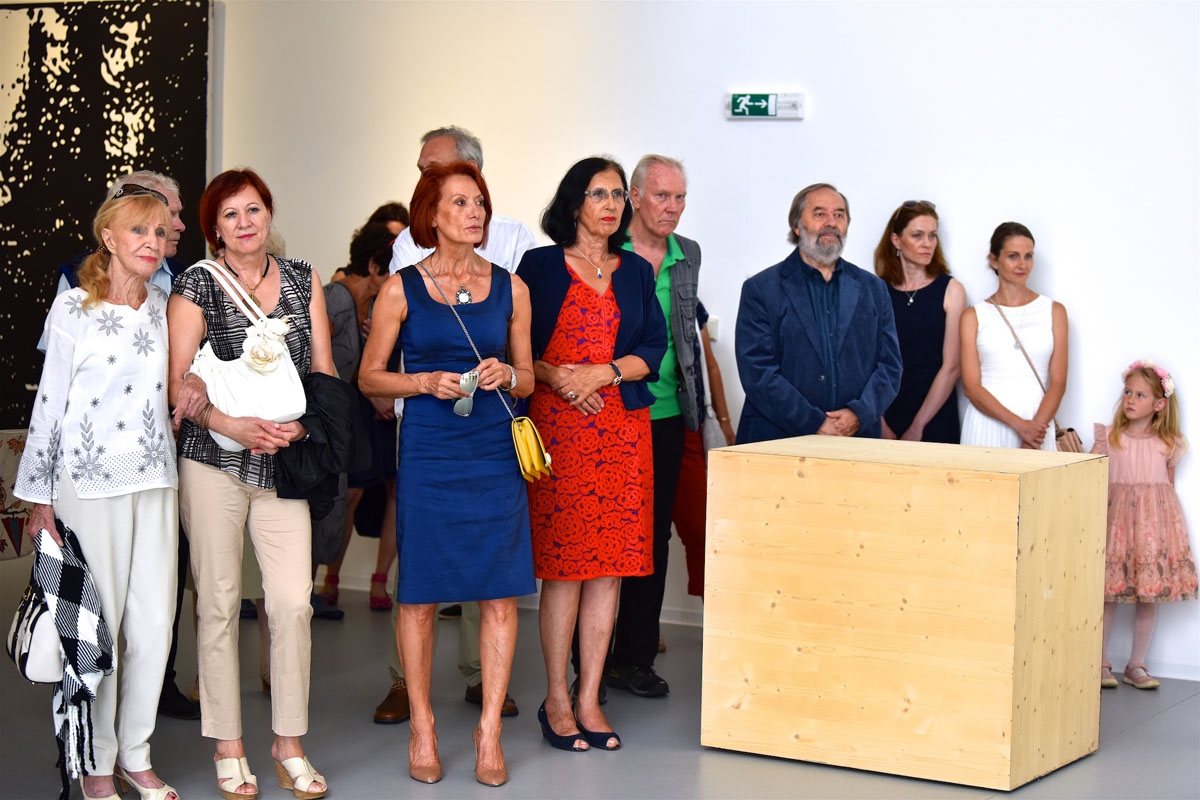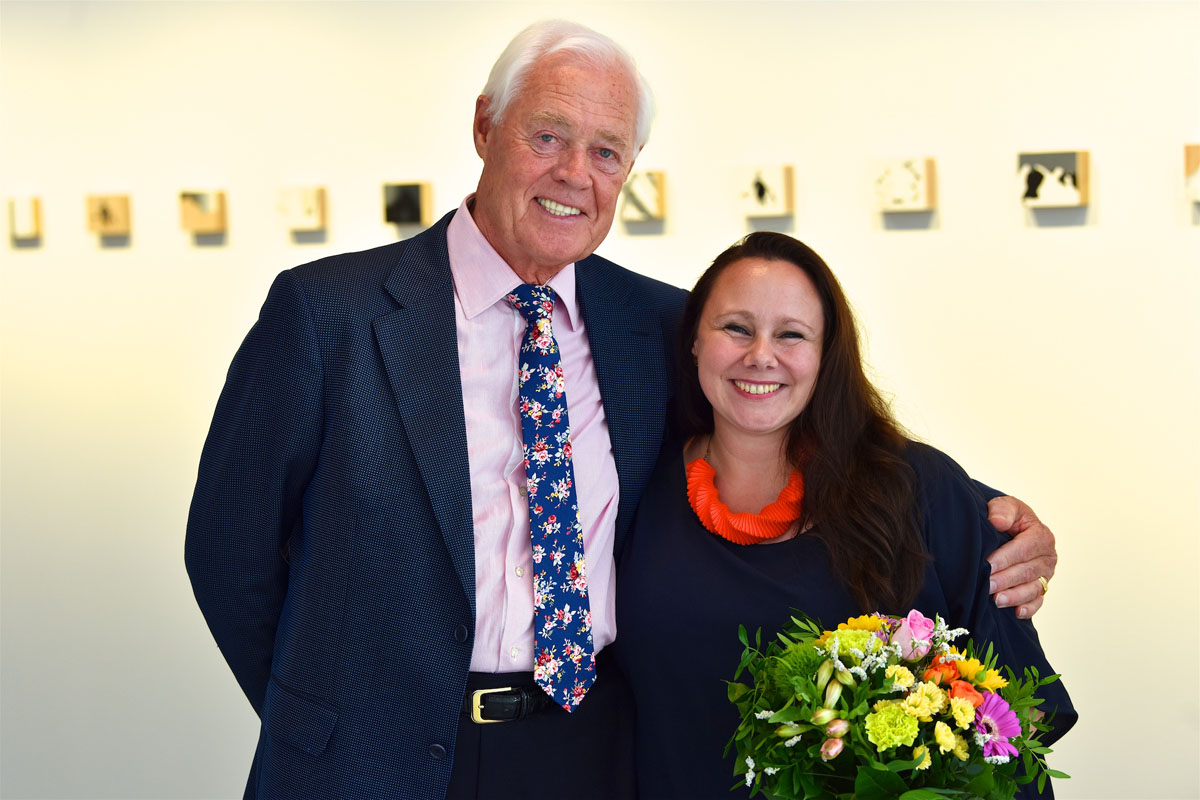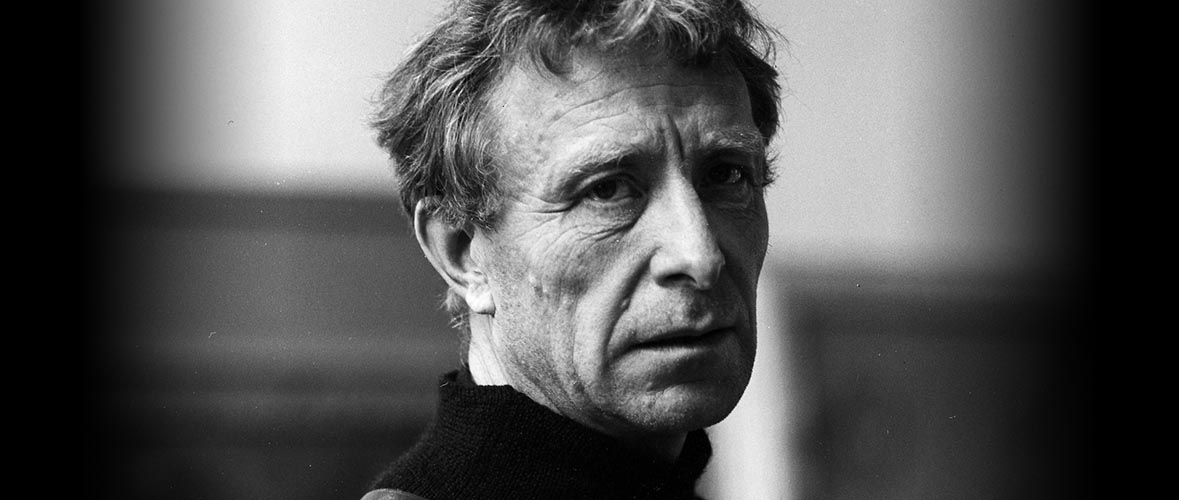

CARL-HENNING PEDERSEN
Carl-Henning Pedersen was of essential significance for Danish art of the second half of the 20th century. The experimental nature of his work established the link of contemporary Danish art to the European avant-garde streams from the late 1930s. His work soon found recognition due to its original artistic language in which he successfully transformed the impulses of Cubism and Picasso, and particularly inspirations from the paintings of Klee, Kandinsky, Chagall and other masters. The exceptional nature of his work was projected in the international context especially through his cooperation with the CoBrA international artistic movement (1948-1951). Being older by a generation in the period of its activities, Pedersen had already established his characteristic style, which was very close to the aesthetic intents of the CoBrA group. They admired his art and for some (P. Alechinsky) it became an inspiration.
Pedersen’s work can be classified as spontaneous abstraction, but the artist drew themes from the objective, figurative world, because the character of his work is determined by the manner of its artistic adaptation. And this is a domain where Pedersen formulated his specific artistic style and vision of the world. His visionary ability allowed him to create an impressive fantasy world composed of stylized figures, faces, masks, birds, horses, sun as symbols beyond the real world. He found the basis for his artistic language in children’s drawings, folk art, works of outsiders as well as sacral art. His distinctive dark line drawing, which emphasized a sign interpretation of the theme, served as a formative instrument. Its generalizing nature was perceived by Pedersen as a universal and timeless phenomenon. The fantasy element of the world in his paintings was enhanced by shiny colors with a prevailing sunny yellow and later a whole range of sky blue tones. Color forms and shapes in translucent space without gravity, hoovered and created a joyful world of fairy tales. As a result, Pedersen was known as the Scandinavian Chagall.
One section of the exhibition features a selection of the works of Else Elfelt, a representative of Danish abstract painting who analyzed prismatic forms derived from landscape and mountain motifs. She used distinctive colors and composed dynamic forms in spiral formations in which she discovered myth-forming power and space for meditation.
ELSE ALFELT,
the outstanding Danish abstract painter characterized her work as follows: “I depict color and rhythm.” She composed the rhythm of colors and forms in dynamic and suggestive visual wholes. She experienced rejection at the beginning, but in 1941she presented her art program at a solo exhibition. Her early compositions were of a distinctive two-dimensional geometrizing character and corresponded with what the artists from the Abstraction-création group developed in this field. However, Alfelt did not follow the path towards geometrical abstraction, although a geometrizing linear raster continued to be the base of her work. She created her own emblematic vocabulary based on the rhythmic composition of sharp, two-dimensional color formations. Despite the fact that her artistic vocabulary leaves an abstract impression, it is an outcome of inspirations from the real world, mountains and the sea, in particular, and a formal analysis derived from them (Points Reaching for the Sky, 1945). A great traveler, she sensitively perceived the environment and landscape, their differences and specific impact on the senses. Through relatively economic means she successfully mediated the abundance and beauty of nature in its internal dimension rather than through realistic depiction. It features a certain contradiction between an emphasis on a strong internal poetic expression and a more resolute artistic language comprised of sharp, pointy forms. The dynamics of their compositions express various types of motion: most frequently spirals, swirling circles, waves, ascending verticals and diagonals or movement on an ecliptic (The Flower of the Universe no. 20, 1966). In each case, the internal link between two worlds – the landscape of mountains and water and the spiritual content – is obvious.
Elsa Alfelt’s work became popular through intensive exhibition activities and its originality. Along with other Danish artists and her husband Carl-Henning Pedersen, she became a member of the CoBrA movement. She participated in exhibitions in Amsterdam and Liège, and after the demise of this movement, around the world. Edouard Jaguer prepared a monograph about her work which was published by the Cobra Library. As an acknowledged painter, she became a member of the Association of Visual Artists. Her travels abroad, especially to Greece, Italy, Spain, Turkey and Switzerland, became important for the further development of her work. In connection to her work on the mosaic for the Rungsted Comprehensive School she visited Ravenna, Venice and the Dolomites. During her travels she also drew inspiration for her sea and mountain motifs. Alfelt’s work was markedly affected by her trip to Japan and not only from the formal aspect, because it strengthened the Zen meditative aspect of her work. She created works inspired by the landscape and the calligraphic brush techniques. The reduction of landscape motifs to the structure of typical brush strokes in which the circle of the sun is caught in mountain tops and translucent space (Japan, 1967, Nikko,-Japan, 1967). These experiences also affected the work of her next period which was manifested in the softening of the lines and planes in wavy dynamic shapes.
Else Alfelt’s paintings create the impression of meditations on the eternal circle of life and nature. At the end of her career, the Academy awarded her the Thorvaldsen Medal for Merit in Danish modern art. However, she did not live to see the opening of the Carl-Henning Pedersen & Else Alfelt Museum in Herning, where her work was collected.
